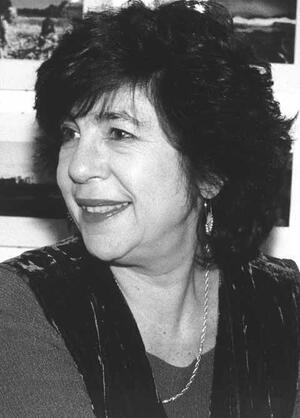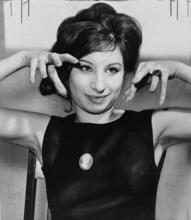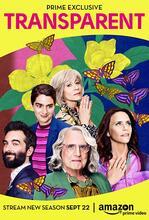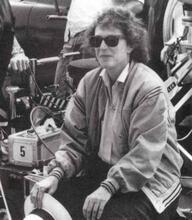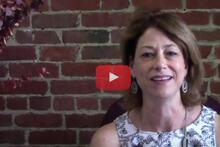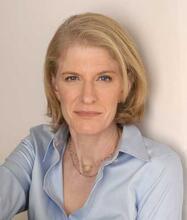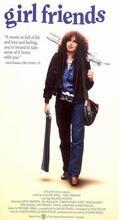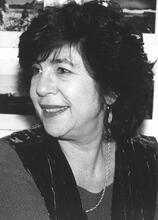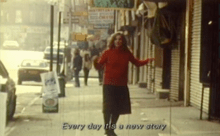Filmmakers, Independent North American
Photographer: Jonathan Marx
Institution: Lilly Rivlin
Since the 1970s, independent filmmakers in North America have produced original, provocative works, albeit on a small scale, that challenged not only the forms of Hollywood “product” but also the industry’s thematic conventions. Jewish women directors have made significant contributions to independent film and have created mainstream and experimental works that attempt to redefine Jewish identity. Jewish female film and video makers give voice to enduring Jewish themes of historic oppression, resistance, immigration, and exile, with some independent feature films reaching much broader audiences when they situate Jewish characters in romantic and/or comedic stories. Subverting male-dominated Jewish literary and Hollywood traditions, some of these filmmakers employ images of hybrid identities, interfaith romance, and oppositional politics and suggest the struggles for equality that continue to be waged inside the Jewish community.
Beginnings of Independent North American Cinema
Independent North American cinema and video began in 1975. Aided by the developmental breakthroughs of lightweight synch-sound film equipment, the invention of video, and the creation of federal and state arts funding agencies in the 1970s, artists and political activists translated their visions into images that reflected and defined a generation. More recent technological advances in digital cameras and computer software, such as Final Cut Pro, have democratized filmmaking further, making it accessible to virtually everybody. Free from the constraints of Hollywood studios or network television, directors produced original, provocative works, albeit on a small scale, that challenged not only the forms of Hollywood “product” but also the industry’s thematic conventions.
Originally, an independent work was loosely defined as one where the director has creative control and where financing and distribution are independent of major studios, networks, or similar corporate entities driven by the profit imperative. Ironically, the independent world has become so profitable that Hollywood and television have become significant sources of investment and distribution. As a result, the definition of “independent” has evolved. One new definition maintains that independents can receive partial studio support and distribution. It is hoped that what remains is what is essential to independent film: uniqueness of vision and creative control by the director.
Since the start of the independent movement, American Jews have contributed their share of self-reflective and identity-based work in film and video, in genres that have ranged from traditional narrative to the most experimental of documentaries. This search for identity, in particular Jewish identity, can be viewed as a reaction to the postwar generation’s assimilation or to the 1960s generation’s often-oppressive internationalism and self-denial. The new work has broken free of old norms and now reflects the concerns of personal and group identity. By the mid-1990s, themes of spiritual seeking, environmental activism, and preservation of family histories (both European and American) started to emerge.
Jewish Women Independent Directors
Female Jewish directors have made significant contributions. Along with their male counterparts, they have created mainstream and experimental works, attempted to redefine Jewish identity, integrated the specifically Jewish with the universal, and in some cases reflected a need for self-denial. Gender consciousness permeates their films in varying degrees and might be assessed by a wide range of factors: subject (mother-daughter relations, friendship between women), protagonist or point of view (single women, older women, immigrant women), or filmic style.
In the last three decades of the twentieth century, scores of film and video makers gave voice to enduring Jewish themes of historic oppression, resistance, immigration, and exile. Some independent feature films have reached much broader audiences, especially when they situate specifically Jewish characters in romantic and/or comedic stories. But what may characterize independent Jewish cinema most, including those works made by Jewish women, is its lack of unifying discourse. While the major signifiers of Jewish life in the post-World War II era continue to be Judaism as religion, the Holocaust, and Israel, independent American Jewish cinema seems to subvert that triumvirate with images of hybrid identities, interfaith romance, oppositional politics, and jump-cut collective memories.
Even the “classic” directors of the independent Jewish pantheon have not played by established rules. Ignoring the male-dominated Jewish literary and Hollywood traditions, Joan Micklin Silver made American Jewish women, and the independent choices they make, the catalysts for action in Hester Street (1975) and Crossing Delancey (1988). Both films mirror women’s changing roles and subtly suggest the struggles for equality that continue to be waged inside the Jewish community. In Girlfriends (1978), one of the first successful commercial films to come out of the feminist movement, Claudia Weill made her female protagonist a sensitive, single, sexually independent Jewish woman in New York. Few narrative films since then have received such attention and notoriety.
In both fiction and documentary genres, female Jewish directors have countered established rules by honoring left-wing political traditions, perhaps as a paean to their own outsider status within Judaism or perhaps because they inherited the left-wing tradition of the immigrant period. With her trademark charm and humor, Boston filmmaker Marlene Booth documented the hundred-year history of the socialist Yiddish newspaper in The Forward: From Immigrants to Americans. With discernment and tenderness, Lee Grant directed Melvyn Douglas and Lila Kedrova as a pair of aging Jewish communists who rekindle their love in the film adaptation of Tillie Olsen’s book Tell Me a Riddle (1980). In Forever Activists (1990), Bay-area Oscar nominee Judy Montell told with guts and passion of the “premature antifascists”—the mostly Jewish veterans of the Abraham Lincoln Brigade who, as both Jews and leftists, fought against Franco in Spain. Michal Goldman gave new life to Eastern European Yiddish culture in her film A Jumpin’ Night in the Garden of Eden (1988), a celebration of klezmer music and its roots in the traditions of the Balkans, the Gypsies, vaudeville, and American jazz.
Jewish Identity in Film
A number of independent Jewish directors have used the medium either with the explicit intention of redefining Jewish identity or in order to bend filmmaking genres. In Leaving Home (1980), Ilana Bar Din documented the strengths and pressures within an assimilated suburban Jewish family as four strong daughters define themselves. Lilly Rivlin explored lineage and tribal memory, and raised questions about how women are left out of Jewish family histories, in The Tribe (1983). In Gimme a Kiss (2000) she presented a surprisingly revelatory portrayal of her philandering father and her ambivalent relationship with him. Francine Zuckerman’s innovative film Half the Kingdom (1989) broke new ground by documenting the efforts of seven remarkable women who challenge the Jewish religious and political patriarchy. Lynn Littman movingly portrayed the work of anthropologist Barbara Myerhoff in two Los Angeles neighborhoods: Number Our Days (1976) provided a portrait of the impoverished Jewish elderly in Venice, California, and In Her Own Time (1985) explored and challenged the traditional rituals of Orthodox Jews in Los Angeles’s Fairfax district. Anthropological in other ways are the films of Bonnie Burt, whose A Home on the Range (2002) documents the stories of arrival and survival of Russian Jews who form a community of socialist chicken farmers in the Northern California farm town of Petaluma. Included in the chronicle is a Jewish cowboy singing Yiddish and communist folk songs.
Two directors, Meredith Monk and Eleanor Antin, known for their deconstruction of both Jewish identity and traditional genres, emerged out of the art world and onto the screen in the 1980s. In Monk’s short Ellis Island (1982) and in her feature-length story of a Jewish girl in a medieval French village, Book of Days (1989), history is remarkably re-created through performance pieces that weave together characters, music, movement, and a feeling for the passing of time even as we are transported into timeless realities. The displacement and loss that accompany emigration and the experiences of plague and doom re-created in these works are not unique Jewish experiences. If Jews are “chosen” for anything, it is to interpret what they have experienced for others who share a similar fate.
Eleanor Antin’s work scrupulously subverts sentimentality. Her fabrications of nonexistent silent Soviet masterpieces have become cult items. In The Man Without a World (1991), she creates a gothic, comic melodrama set in an imaginary (Yiddish) Small-town Jewish community in Eastern Europe.shtetl where a young couple’s romance is doomed by Gypsies, dybbuks, and the angel of death. Antin produces an extraordinary period piece that could almost have been made at the turn of the twentieth century, except that it is imbued with the knowledge, humor, and angst of our own time.
The Canadian filmmaker Elida Schogt uses the experimental short form to imaginatively reflect upon her family’s survival in her trilogy Zyklon Portraits (2000), The Walnut Tree (2001), and Silent Song (2002). Wendy Oberlander focuses on both her father’s and mother’s story of exile in Nothing to be Written Here (1996) and Still (Stille, 2001). Taking these themes a step further, Elle Flanders integrates memory and history in the innovative experimental piece Once (2002) and presents alternative Israeli and Palestinian voices in Zero Degrees of Separation (2005). Fortunately, Canadian filmmakers have the benefit of state funding to assist them in the making and distribution of their more artistic works.
Ideological Diversity in Jewish Films
A number of independent filmmakers integrate questions of Jewish identity in their work, but more as subplot than plot. These works are compelling and noteworthy in terms of their attempts to integrate Jewish and universal subjects. Examples include Jan Oxenberg’s critically acclaimed Thank You and Goodnight (1991), which documents the filmmaker’s tender yet devastating relationship with her dying grandmother, and Deborah Hoffmann’s Complaints of a Dutiful Daughter (1994), which describes how the filmmaker comes to terms with her mother’s Alzheimer’s disease. With honesty, compassion, and good doses of humor, both films deal with the specificity of the directors’ Jewish backgrounds as well as the universal themes of aging, death, family caregiving and love. Marlene Booth deconstructs her American Jewish identity in Yiddle in the Middle (1998), in which she raises the issue of dual identities growing up in an Orthodox shul in the heartland of America, Des Moines, Iowa.
Several films implicitly raise important questions about the ways Jewish filmmakers choose not to make Jewish films. Many films made by Jewish women fall in this category. Often, these films reflect the self-denial and desire for invisibility that have been key themes in Jewish history and culture. For example, Connie Field (who is Jewish) and Marilyn Mulford (who is not Jewish), in their acclaimed documentary on Mississippi Freedom Summer, Freedom on My Mind (1994), showcase interviews with Jews who went south as an expression of their identification with the struggle against racism but fails to mention that these interview subjects are Jewish, that Jews were disproportionately involved in civil rights, or that an entire generation’s Jewish identity was itself predicated in part on the idea of black-Jewish alliance. Like their antecedents in the Hollywood studios, there will always be many independent Jewish film and video makers, women included, who do not seem to focus at all on Jewish subjects or identity in their work. What is interesting here are the different ways that these films can be seen as Jewish despite the surface self-denial.
The opposite could be said about New York-based Judith Helfand, who takes on environmental pollutants and corporate irresponsibility in two of her films: Healthy Baby Girl (1996) and Blue Vinyl (2002). In each one, Helfand infuses Jewish humor, klezmer music, and an overall sensibility that has made these films popular at Jewish film festivals. Re-framing these socio/political issues brings Jewish audiences squarely into the larger public debate.
Documentary Film and Film Scholarship
The establishment in 1996 of the first Fund for Jewish Documentary Filmmaking at the National Foundation for Jewish Culture has had a major impact on the field. Six of the eight films chosen for funding in the Fund’s first year were directed by Jewish women: Blacks and Jews by Deborah Kaufman and Alan Snitow; The Commandment Keepers by Marlaine Glicksman; A Healthy Baby Girl by Judith Helfand; The Life and Times of Hank Greenberg by Aviva Kempner; The Return of Sarah’s Daughters by Marcia Jarmel; and Treyf by Alisa Lebow and Cynthia Madansky. Early support from the fund gave social anthropologist-turned-filmmaker Pear Gluck the encouragement to complete The Divan, a charming history of the famous Central European rabbis that had slept on this piece of furniture.
Jewish female producers, including Vivian Kleiman, producer of Routes of Exile: A Moroccan Jewish Odyssey (1982), and Aviva Kempner, producer of Partisans of Vilna (1986) and producer/director of The Life and Times of Hank Greenberg (1999), have been active over the last twenty-five years. Jewish women have also been involved in other aspects of film and video production, such as scriptwriting and editing, distribution, promotion, and exhibition, and they have been prominent in the fields of film and media theory and criticism. Jewish women have contributed important scholarly books to the field of Jewish film studies, including Indelible Shadows: Film and the Holocaust by Annette Insdorf, The Jew in American Cinema by Patricia Erens, and Israeli Cinema: East/West and the Politics of Representation by Ella Shohat. Following the lead of San Francisco, a number of enormously successful Jewish film festivals, organized primarily by Jewish women, emerged and spread across the United States in the 1980s, providing a bridge between independent filmmakers and Jewish audiences.
Despite the innovations and achievements of the American Jewish independent filmmakers, there is still much to be explored. A generation of independent artists informed by identity politics has slowed the silent slide toward assimilation and self-denial. Jewish women have given voice to a range of concerns and styles and have achieved success within the field. The groundwork has been laid for a new generation of independent filmmakers who have the opportunity to continue contributing to the field.
(Janis Plotkin also made contributions to update this article.)
Baron, Lawrence. "The Pioneering American Jewish Women Directors: From Elaine May to Claudia Weill." In Jews and Gender, edited by Leonard Greenspoon. Indianapolis: Purdue University Press, 2021.
Kaufman, Deborah, Janis Plotkin, Caroline Libresco, Sam Ball, and Josh Feiger, eds. Independent Jewish Film: A Resource Guide. San Francisco: 2000.

